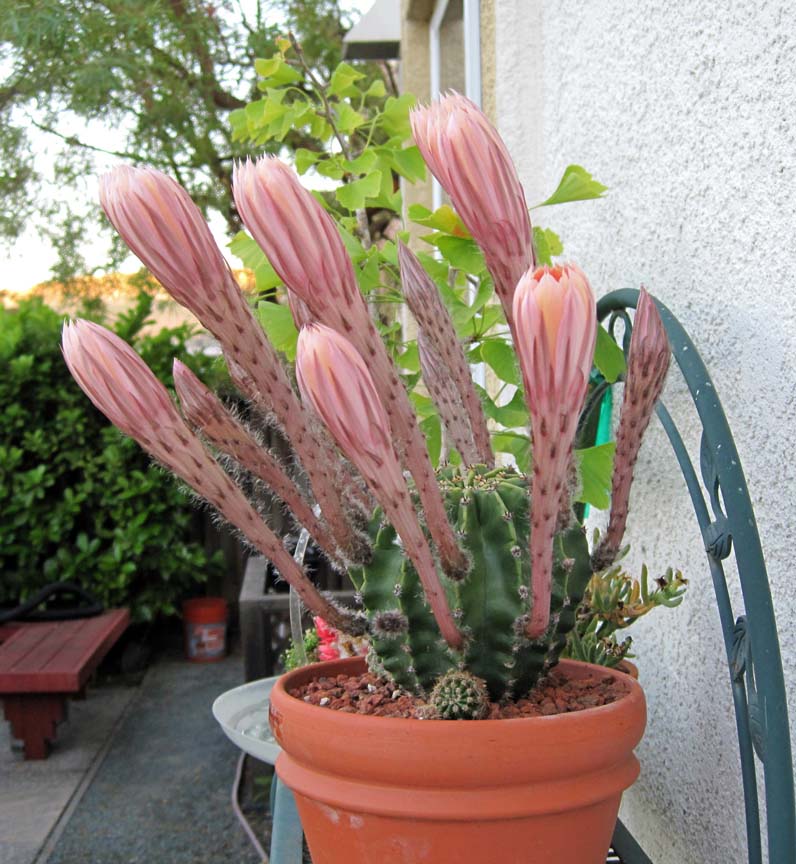Cacti, often admired for their robust resilience and architectural allure, inspire curiosity among horticulturists and casual observers alike. While some may assume that all cacti produce vibrant blooms, the reality is more nuanced. This guide delves into the intricate world of cactus flowering habits, exposing the conditions that trigger their floral displays and exploring the profound reasons behind our fascination with their blossoms.
Understanding whether all cacti flower requires a multifaceted approach. Not only does one have to consider the biological mechanisms at play, but also the environmental conditions and the diverse taxonomy of the cacti themselves. Different species exhibit a plethora of adaptations and growth patterns, which informs their capacity—or lack thereof—to bloom.
The first step in addressing the question lies in recognizing the variety among cacti species. With over 2,000 distinct species spanning the globe, from the towering saguaro to the diminutive Pereskia, each type carries its own genetic blueprint influencing whether and how it flowers. This organizations leads us to the captivating paradox: while many cacti are renowned for their striking blooms, a significant number do not flower at all, or do so sporadically. Understanding the cycle of flowering requires a dive into the ecological and biological factors that govern these extraordinary plants.
Factors Influencing Cactus Blooming: A Comprehensive Overview
To comprehend the complexities of cactus blooming habits, one must first consider the interplay of various environmental factors. These include light, temperature, water availability, and even soil composition.
Light is perhaps the most critical element. Cacti, being native to arid climates, have evolved to thrive under intense sunlight. Most cacti require a specific photoperiod—an optimal duration of light exposure—to initiate the flowering process. For many species, prolonged exposure to sunlight during the growing season prompts the necessary hormonal changes that cue the transition from vegetative growth to flowering. Without ample light, even the most floriferous species may remain barren.
Temperature also plays a pivotal role in this biological orchestra. Many cacti thrive in temperate climates where temperature fluctuations mimic their native habitats. These plants require a period of dormancy, often in cooler conditions, to stimulate future growth and flowering. It is during the warmer months that they awaken and prepare to display their magnificent flowers.
Water availability is another decisive factor. In their natural environments, cacti have adapted to long, arid periods, only to respond dramatically to seasonal rains. This water pulse prompts a myriad of physiological responses—culminating in flowering. Too little or too much water can entirely inhibit the blooming process. Hence, understanding a cactus’s watering needs is crucial for re-creating the conditions under which they might flower.
Lastly, soil composition cannot be overlooked. Well-draining substrates rich in organic matter and minerals contribute to the overall health of the cactus, ensuring it receives the necessary nutrients for blooming. The right balance fosters a robust root system capable of supporting floral development.
Species-Specific Blooming Patterns: An Intriguing Examination
Furthermore, certain cacti are known to produce nocturnal blooms. The notorious “Queen of the Night” cactus, for example, displays flowers that bloom under the moonlight, producing a captivating sight that attracts nocturnal pollinators. This adaptation highlights the symbiotic relationship between cacti and their environments, revealing how evolutionary pressures have shaped blooming habits in response to ecological niches.
The Mystery of Blooms: Cultural and Psychological Fascination
Beyond the scientific inquiry into whether all cacti flower lies a deeper fascination—one that speaks to humanity’s connection with nature. The delicate yet stark beauty of cactus blooms can evoke a range of emotions, from awe to introspection. These floral displays, often short-lived, encourage a transient appreciation for the beauty and fragility of life itself.
Moreover, the cultural significance of these blooms cannot be understated. In many desert-dwelling communities, the blooming of certain cacti heralds seasonal changes, marking periods of growth and renewal. In art and literature, cactus flowers symbolize resilience, patience, and beauty emerging from hardship. This profound symbolism enriches our understanding of these plants and enhances their allure.
In conclusion, while not all cacti methodically produce flowers, the intricate dance of factors that influence their blooming habits reveals a wealth of information about adaptability and survival in harsh environments. By exploring the environmental nuances that affect flowering, the distinctive preferences of species, and the cultural implications of these blooms, one navigates a rich tapestry that underscores the complexity of the natural world. Cactus flowers may be elusive, but they embody a blend of mystery and beauty that continues to captivate enthusiasts and casual observers alike.





Leave a Comment